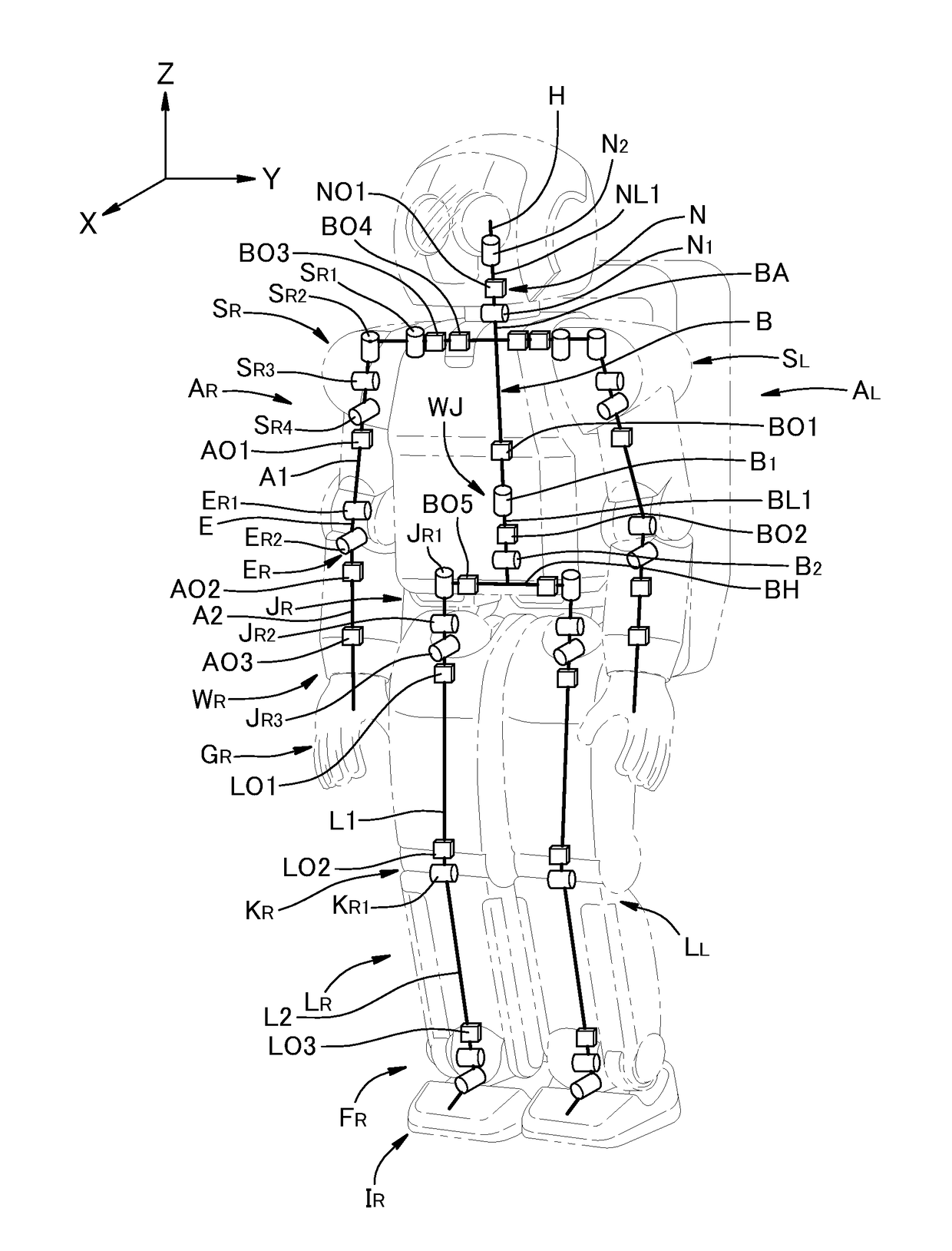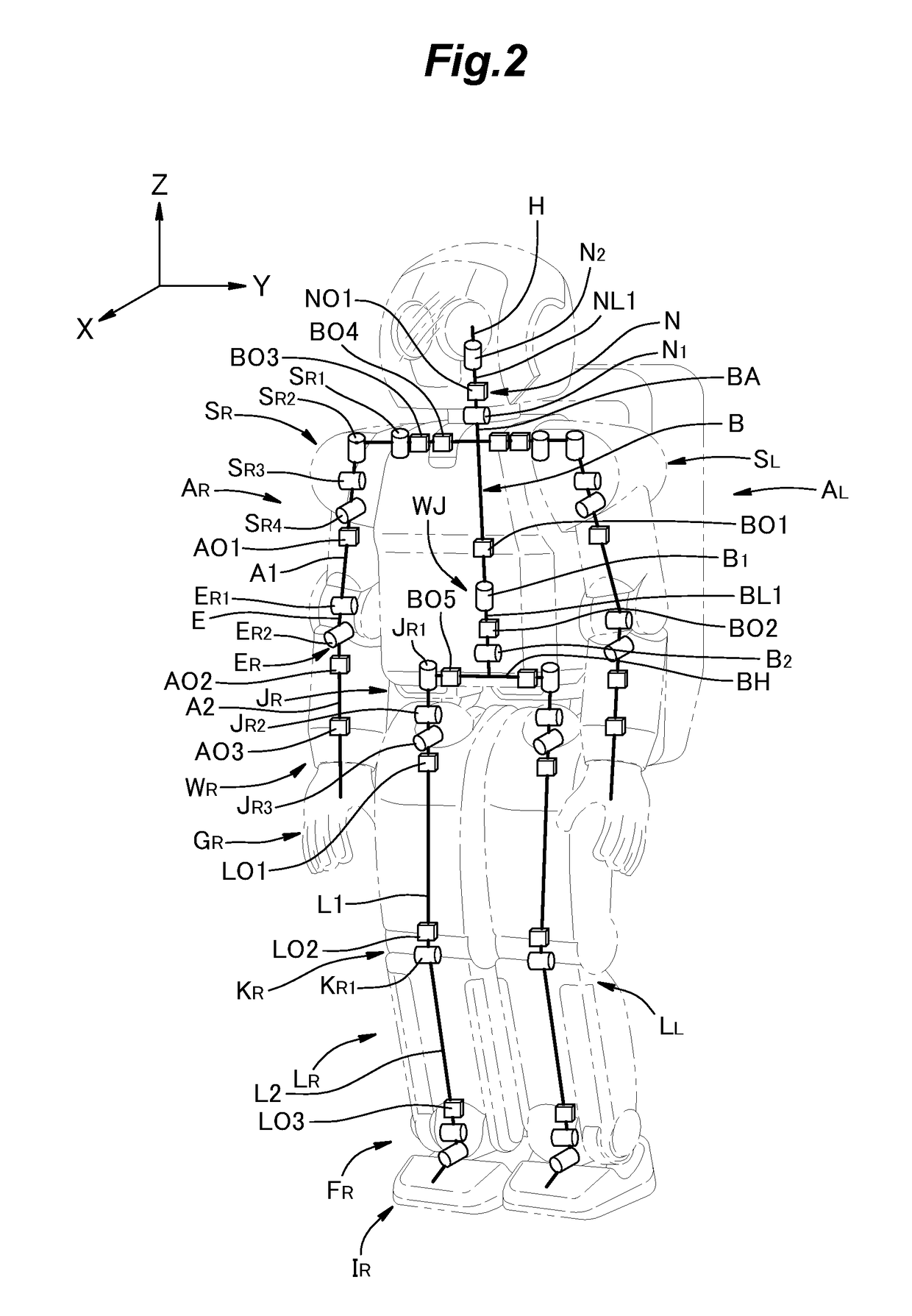Optical fiber network for transmitting signals in a robot
- Summary
- Abstract
- Description
- Claims
- Application Information
AI Technical Summary
Benefits of technology
Problems solved by technology
Method used
Image
Examples
first embodiment
[0044]FIG. 3 is a schematic diagram showing one of the optical fiber networks provided in the robot R according to a first embodiment. As shown in FIG. 3, an optical fiber network 9 includes the optical transceiver modules BO1, BO5, LO1, LO2, and LO3 and optical fiber cables 1, 2, 3, 4, and 5 connecting them. The optical transceiver module BO1 is provided on the torso link BA, and the torso link BA is connected, via the waist joint WJ including the couplings B1 and B2, to the hip link BH which is provided with the optical transceiver module BO5. The hip link BH provided with the optical transceiver module BO5 is connected, via the hip joint JR including the couplings JR1, JR2 and JR3, to the upper link L1 which is provided with the optical transceiver modules LO1 and LO2. The link L1 provided with the optical transceiver modules LO1 and LO2 is connected, via the knee joint KR including the coupling KR1, to the lower link L2 provided with the optical transceiver module LO3. The torso...
second embodiment
[0063]As shown in FIG. 6, an optical fiber network 19 provided in the robot R according to a second embodiment includes the optical transceiver modules BO1, BO3, AO1, AO2, and AO3, and optical fiber cables 11 to 15 connecting them. In this drawing, the controllers and servomotors are omitted. The optical transceiver modules BO1 and BO3 are provided on the torso link BA, which is connected, via the couplings SR1, SR2, SR3, and SR4 of the shoulder joint SR, to the upper link A1 which is provided with the optical transceiver module AO1. The upper link A1 is connected, via the couplings ER1 and ER2 of the elbow joint ER, to the lower link A2 which is provided with the optical transceiver modules AO2 and AO3. The torso link BA, the upper link A1, and the lower link A2 are connected in series via the joints SR and ER including the couplings SR1, SR2, SR3, SR4, ER1, and ER2, and the optical transceiver modules BO1, BO3, AO1, AO2, and AO3 are provided on these links.
[0064]The optical fiber ...
third embodiment
[0072]As shown in FIG. 7, an optical fiber network 29 provided in the robot R according to a third embodiment includes the optical transceiver modules BO1, BO2, BO4, and NO1, and optical fiber cables 21 to 24 connecting them. In this drawing, the controllers and servomotors are omitted. The optical transceiver modules BO1 and BO4 are provided on the torso link BA, which is connected, via the coupling B1 of the waist joint WJ, to the waist link BL1 provided with the optical transceiver module BO2. The torso link BA is also connected, via the coupling N1 of the neck joint N, to the neck link NL1 provided with the optical transceiver module NO1. Thus, the waist link BL1, the torso link BA and the neck link NL1 are connected in series in this order.
[0073]The optical fiber cables 21 to 24 connect the optical transceiver modules BO1, BO2, BO4, and NO1 in a ring. The optical fiber cable 21 connects the optical transmitter TX of the optical transceiver module BO1 with the optical receiver R...
PUM
 Login to View More
Login to View More Abstract
Description
Claims
Application Information
 Login to View More
Login to View More - R&D
- Intellectual Property
- Life Sciences
- Materials
- Tech Scout
- Unparalleled Data Quality
- Higher Quality Content
- 60% Fewer Hallucinations
Browse by: Latest US Patents, China's latest patents, Technical Efficacy Thesaurus, Application Domain, Technology Topic, Popular Technical Reports.
© 2025 PatSnap. All rights reserved.Legal|Privacy policy|Modern Slavery Act Transparency Statement|Sitemap|About US| Contact US: help@patsnap.com



